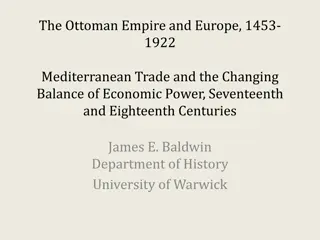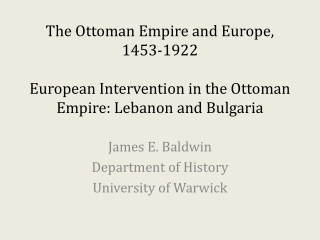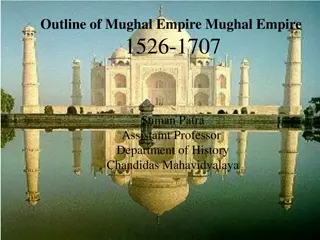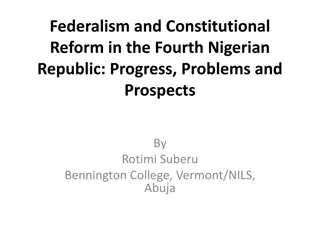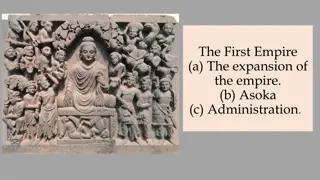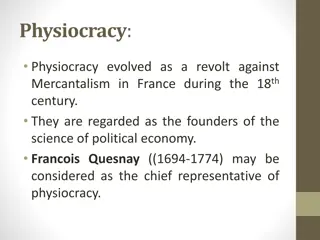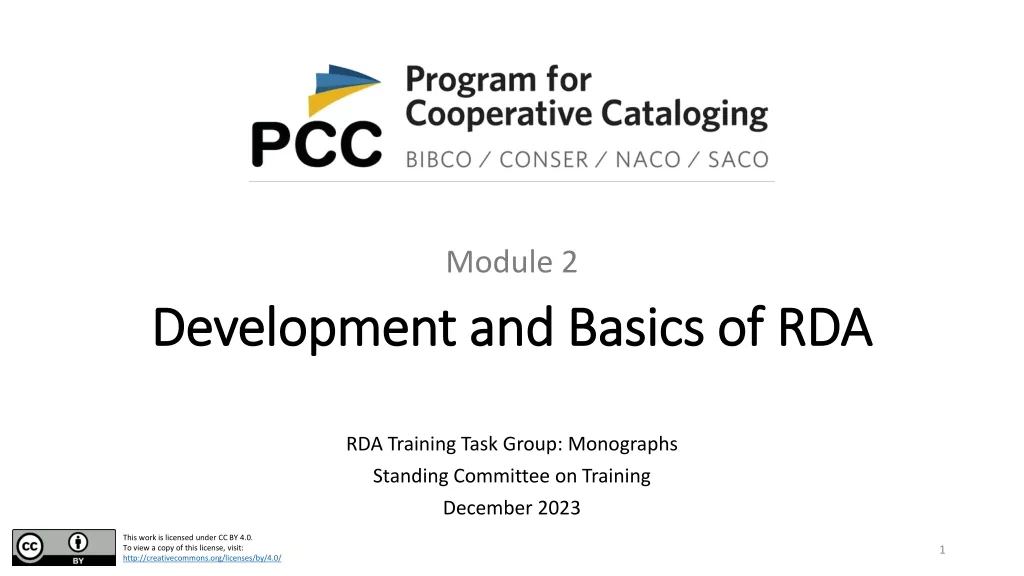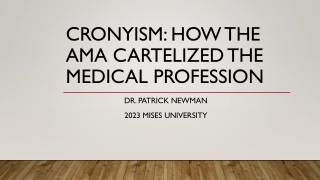Reform Efforts in the Ottoman Empire: 18th and 19th Century Transformations
The Ottoman Empire underwent a series of reforms from the late 18th to the 19th century, aiming to centralize power, boost revenues, strengthen the military, educate bureaucrats, refine legal systems, and improve healthcare. Factors driving these reforms included military weaknesses, separatist national movements, and external threats. Sultan Selim III's attempts at military reform faced resistance from the Janissaries, leading to his deposition. The Nizam-i Cedid, his new army force, saw partial success but struggled with recruitment and opposition.
Reform Efforts in the Ottoman Empire: 18th and 19th Century Transformations
PowerPoint presentation about 'Reform Efforts in the Ottoman Empire: 18th and 19th Century Transformations'. This presentation describes the topic on The Ottoman Empire underwent a series of reforms from the late 18th to the 19th century, aiming to centralize power, boost revenues, strengthen the military, educate bureaucrats, refine legal systems, and improve healthcare. Factors driving these reforms included military weaknesses, separatist national movements, and external threats. Sultan Selim III's attempts at military reform faced resistance from the Janissaries, leading to his deposition. The Nizam-i Cedid, his new army force, saw partial success but struggled with recruitment and opposition.. Download this presentation absolutely free.
Presentation Transcript
The Ottoman Empire and Europe, 1453-1922 Reform in the Nineteenth-Century Ottoman Empire James E. Baldwin Department of History University of Warwick
An Age of Reform Tanzimat: lit. putting in order, generally refers to political reforms undertaken between 1839 and 1878 Longer process of reform began under Selim III in late 18thcentury and continued after 1878 under Abdulhamid II Parallel process of reforms undertaken in Egypt by Mehmed Ali and his successors
What was reformed? Political reform: in some ways liberalizing, but with the ultimate objective of centralizing power Fiscal reform: to increase revenues Military reform: to face external enemies such as Russia and internal threats Educational reform: to train bureaucrats to staff new administrative institutions Legal reform: to handle new concepts of subjecthood and to effect centralization of power Medical reform: to ensure a healthier and therefore more productive population
Why reform? Military weakness in late eighteenth century: losses in Russo-Turkish wars of 1768-74 and 1787-92, French occupation of Egypt in 1798 Internal threat of separatist nationalism: autonomy of Serbia in 1815 and independence of Greece in 1830 Military reform at core of reform project; fiscal reform and political reform closely related
Selim III and the Nizam-i Cedid Selim III becomes Sultan in 1789, midway through Russo-Turkish War of 1787-92. Selim s attempt to introduce new hierarchy and regular drill to Janissaries meets with resistance New army the Nizam-i Cedid introduced to operate in parallel to Janissaries Nizam-i Cedid incorporated innovations of the European military revolution: full-time soldiers with hierarchy, daily roll call and drill, subject to strict discipline
Results of Selim IIIs reforms Nizam-i Cedid partial success: expensive, difficult to recruit despite high salaries, but performed well Janissaries continue to resist reform, deposing and assassinating Selim III in 1807 Sultan Mahmud II abolishes Janissaries in the Auspicious Incident of 15 June 1826; thousands of Janissaries in Istanbul killed Mahmud II founds new regiment, the Asakir-i Mansure-yi Muhammadiyye
Egyptian Military Reform After expulsion of French, Mehmed Ali builds new army modeled on both French army and Selim s Nizam-i Cedid Also faced fierce resistance from entrenched interests. Mehmed Ali responds with the Massacre of the Mamluks on 1 March 1811 Early attempts to enslave Sudanese soldiers replaced by conscription of Egyptian peasantry in 1820s Mehmed Ali s army very successful, assisting Ottomans in Arabia and Greece, challenging them in Syria and Anatolia
Egyptian Military Reform After expulsion of French, Mehmed Ali builds new army modeled on both French army and Selim s Nizam-i Cedid Also faced fierce resistance from entrenched interests. Mehmed Ali responds with the Massacre of the Mamluks on 1 March 1811 Early attempts to enslave Sudanese soldiers replaced by conscription of Egyptian peasantry in 1820s Mehmed Ali s army very successful, assisting Ottomans in Arabia and Greece, challenging them in Syria and Anatolia
Egyptian Military Reform After expulsion of French, Mehmed Ali builds new army modeled on both French army and Selim s Nizam-i Cedid Also faced fierce resistance from entrenched interests. Mehmed Ali responds with the Massacre of the Mamluks on 1 March 1811 Early attempts to enslave Sudanese soldiers replaced by conscription of Egyptian peasantry in 1820s Mehmed Ali s army very successful, assisting Ottomans in Arabia and Greece, challenging them in Syria and Anatolia
Political reform Major documents of Tanzimat: Hatt-i erif of G lhane (1839), Islahat Ferman (1856), Ottoman Constitution (1876) Tanzimat reformers sought to conform to European norms and to appease Christian subjects Equal status for Muslims, Christians and Jews Fostered national identity as Ottomans
Ottoman Constitution of 1876 Introduced by the Young Ottomans and Midhat Pasha, against opposition from Sultan Abdulhamid II Essentially autocratic constitution: Sultan invested with full executive power, ministers responsible to him Check on Sultan s power provided by bicameral parliament: lower chamber indirectly elected, upper chamber appointed Abdulhamid II suspends constitution and dissolves Parliament in 1878
Abdulhamid the reformist Mecelle-yi Ahkam-i Aliyye: code of shar a law introduced in 1877, that represents assertion of government s control of shar a. Traditionally, shar a law s authority came from transnational community of jurists who interpreted Koran and hadith. Mecelle was authoritative, within the empire, because the government made it so. Educational reforms continued under Abdulhamid: reformed schools to produce staff for new courts and new bureaucracy.



